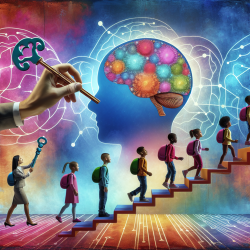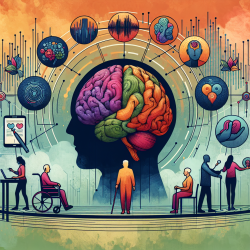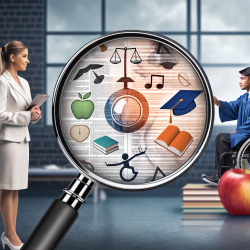As a special education director, you are undoubtedly aware of the unique challenges faced by children with developmental dyslexia (DD). Recent research has shed light on the neural correlates of sequence learning in children with DD, providing valuable insights that can help practitioners improve their skills and strategies. The study, "Neural correlates of sequence learning in children with developmental dyslexia," conducted by Hedenius and Persson, explores the functional and structural brain correlates of sequence-specific procedural learning. This blog aims to translate these findings into actionable steps for practitioners working with children with DD.
Understanding the Research
The study utilized Magnetic Resonance Imaging (MRI) to examine the brain activity of 17 children with DD and 18 typically developing (TD) children during a serial reaction time task. The findings revealed that children with DD showed less activation of the striatum—a key component of the brain's procedural memory system—when processing sequential statistical regularities. This reduced activation was linked to lower sequence learning (SL) performance, which in turn affected reading fluency.
Key Findings and Their Implications
- Striatal Activation: Reduced striatal activation in children with DD during sequence learning tasks.
- Reading Fluency: Lower sequence learning performance correlates with reduced reading fluency.
- Compensatory Mechanisms: The hippocampus, part of the declarative memory system, may serve a compensatory role in TD children but not in children with DD.
Practical Applications for Practitioners
Understanding these neural mechanisms can guide practitioners in developing targeted interventions. Here are some strategies to consider:
1. Emphasize Procedural Learning
Given the reduced striatal activation in children with DD, it is crucial to focus on activities that enhance procedural learning. Incorporate repetitive, structured tasks that gradually increase in complexity. Examples include:
- Interactive games that require pattern recognition.
- Motor skill activities such as typing or playing a musical instrument.
2. Utilize Multisensory Approaches
Engage multiple senses to reinforce learning. Techniques such as the Orton-Gillingham approach, which combines visual, auditory, and kinesthetic learning, can be particularly effective.
3. Leverage Technology
Online therapy platforms like TinyEYE can offer customized, interactive exercises that adapt to each child's learning pace. These platforms can also track progress and provide real-time feedback.
4. Encourage Parental Involvement
Parents play a vital role in reinforcing learning at home. Provide them with resources and training to support their child's learning journey. Activities such as reading together, playing educational games, and practicing sequence-based tasks can be beneficial.
5. Promote a Growth Mindset
Encourage children to view challenges as opportunities for growth. Celebrate small achievements to build confidence and motivation. A positive mindset can significantly impact a child's willingness to engage in learning activities.
Encouraging Further Research
The findings from this study highlight the importance of continued research into the neural mechanisms underlying DD. By staying informed about the latest research, practitioners can continually refine their approaches and provide the best possible support for their students.
To read the original research paper, please follow this link: Neural correlates of sequence learning in children with developmental dyslexia.










